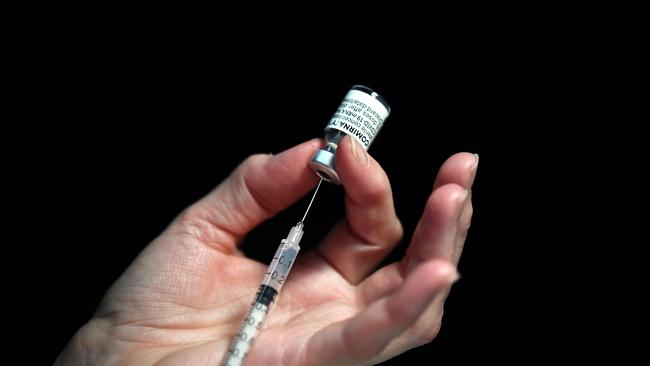Trial success for all-in-one Covid and flu jab
A single jab of combined flu and coronavirus vaccines could be made available in Britain after trial results showed a better immune response than separate injections.

A single jab that combines the flu and coronavirus vaccines could be made available in Britain after trial results showed it prompted a better immune response than separate injections.
The Moderna vaccine would allow millions of older patients to have their immunity against both viruses topped up with one jab.
In a trial involving 8000 people aged 50 and over, it was found to produce greater immune responses against flu and coronavirus than the single vaccines in use at present. It is hoped the new two-in-one vaccine, called mRNA-1083, will be particularly beneficial for people who are afraid of needles, and could be widely available in Britain in time for the winter of 2025-26.
Moderna chief executive Stephane Bancel said dual jabs “have the potential to reduce the burden of respiratory viruses on health systems and pharmacies, as well as offer people more convenient vaccination options”.
The mRNA-1083 jab matched or bettered current flu jabs and was more effective than Moderna’s current Spikevax at making the body produce antibodies against the coronavirus. This is probably because it had been designed to fight more recent variants of the virus. The randomised controlled trial involved two groups of about 4000 people each, with the first group aged 65 and over testing the new jab compared with a flu vaccine.
The second group comprised adults aged 50 to 64 and included use of a flu jab.
The vaccine was found to be safe, with side effects similar to those after other flu and coronavirus vaccines, including muscle aches, fatigue and headache.
Moderna said full results of the trial would be presented at a medical conference.
Moderna president Stephen Hoge said the US firm hoped to launch the new jab later this year.
The relatively new mRNA technology was used widely for the first time during the pandemic and is now being applied to other diseases, including cancer.
Traditional vaccines work by introducing a weakened or inactivated virus into the body, triggering an immune response, whereas mRNA vaccines work by providing genetic instructions (called RNA) for cells to create copies of a specific protein found on the outside of viruses.
This triggers the immune system to create antibodies against the virus, meaning the body is primed and ready for future infections. The new jab provides RNA codes against four common strains of flu as well as coronavirus.
The Times







To join the conversation, please log in. Don't have an account? Register
Join the conversation, you are commenting as Logout